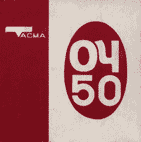Tom Cross
Member
Having never developed 120 film, I wanted to have a dry run. I spoke to my Dad and he said don't waste a film, I'll post you and old one to try. It arrived last week, and it was Jessops R100 with an expiry of July 1996! Seems a shame to waste it, I thought I might as well put it through a camera.
Is there anything I need to do to help with development after all that time? Or will it probably be ok?
Is there anything I need to do to help with development after all that time? Or will it probably be ok?




 Drum in a Lake
Drum in a Lake
 Old Tug Boat
Old Tug Boat